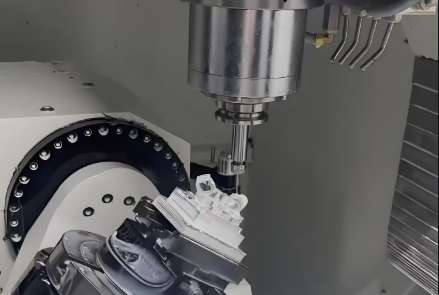
When offshore wind turbines continue to generate megawatt-level power amidst storms,their gearbox planet carriers are subjected to alternating loads equivalent to the weight of 300 compact cars.The fatigue failure of these large metal parts often begins in the invisible battlefield within the material—the imbalance of residual stress distribution.Research indicates that over 60%of early failures in wind power gearboxes originate from the mismatch of stress control between CNC machining and heat treatment processes.
The Fatigue Effect Chain of Residual Stress
Imagine the microscopic world at the root of a gear tooth:
• Harmful Tensile Stress Zone:Like a stretched rubber band,it becomes a breeding ground for crack initiation.
• Beneficial Compressive Stress Layer:Like armor for the material,it inhibits crack propagation.
• Stress Gradient Abrupt Change Zone:At the interface between heat treatment and machining,there may lurk traps of stress imbalance.
In the new energy field,the cost of wind power component failure is staggering:replacing the gearbox of a 5MW unit requires a giant crane ship,with a single operation costing over one million euros.
Three-Dimensional Matrix of Collaborative Control
Dimension One:Stress Foundation through Heat Treatment Process
For carburized steel 18CrNiMo7-6 gears:
• Deep Carburizing Control:Optimize the hardness gradient from a steep type(>45HRC/mm)to a gentle type(<25HRC/mm).
• Pressurized Gas Quenching Technology:Achieve uniform cooling with helium gas at 6bar pressure,reducing the temperature difference between the gear surface and core to within 80°C.
• Deep Cryogenic Treatment:Sustain for 12 hours in a-196°C liquid nitrogen environment to transform 90%of residual austenite and release structural stress.
Dimension Two:Stress Refinement through CNC Machining
Special challenges in machining large metal parts:
• Innovative Turning and Milling Strategy:
• During rough machining with a 0.3mm allowance,use deep cutting and small feed(ap=8mm,f=0.1mm/r).
• Switch to shallow cutting and large feed(ap=0.15mm,f=0.3mm/r)in the finishing stage.
• Intelligent Tool Path Planning:
• Avoid vertical tool retraction in the root stress concentration area.
• Replace radial cutting with helical interpolation milling.
• Process Stress Monitoring:
• Integrate acoustic emission sensors to capture cutting vibrations in real time.
• Use infrared thermography to monitor machining temperature rise below 120°C.
Dimension Three:Cross-Process Data Loop
Practice on an 8MW offshore wind power gearbox:
• Heat Treatment Data Stream:Synchronize the carburized layer depth distribution map to the CAM system.
• Adaptive Machining:Automatically adjust finishing cutting parameters based on hardness gradient.
• Stress Mapping Verification:On-site detection of residual stress on gear surfaces with X-ray diffractometer,with accuracy reaching±20MPa.
• Fatigue Test Feedback:Bench test data drives iterative improvement of process parameters.
This solution increased the planet carrier's fatigue life from 1.5×10⁷ cycles to 5×10⁷ cycles,equivalent to extending the service life from 15 years to 25 years offshore.
Spillover Value of Synergistic Effects
When the residual stress field is precisely controlled,unexpected benefits follow
• Cost Paradox Resolved:Although process complexity increases by 15%,total manufacturing costs are reduced by 8%due to the elimination of grinding burn rework.
• Precision Dimension Expansion:Gear meshing noise is reduced by 6dB,equivalent to lowering the wind turbine operating sound from a vacuum cleaner to a refrigerator level.
• Material Potential Unleashed:Gear surface contact fatigue strength is increased by 18%with the same material grade.
These technologies are being transferred to the machining of photovoltaic tracking bracket bearing housings:by optimizing the stress of the rotating support raceway,the jamming failure rate in the Gobi desert environment is reduced by 75%.
Ecological Insights from Wind Power Precision Engineering
In the field of large metal part machining,the wind power gearbox collaborative solution has paradigm significance:
• Unlike the pursuit of microscopic cleanliness in precision machining of metal parts such as surgical robot joints,wind power components tame stress at the macroscopic scale.
• Compared to the batch production rhythm of photovoltaic panels,wind power gearboxes are more like customized symphonies—every change in machining parameters affects the harmony of the entire piece.
• When heat treatment engineers and CNC programmers share the same stress map,and material phase transformation kinetics data drives tool path planning in real time,this cross-disciplinary collaboration is like casting an invisible stress skeleton for wind power equipment.
The residual stress distribution curves buried inside the gearbox are,in fact,the precise language through which humans converse with megawatt-level wind energy.Every breakthrough in stress balance extends the graceful arc of the wind turbine blades slicing through the sky—this is the most touching engineering epic of the new energy era.